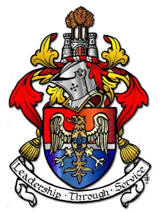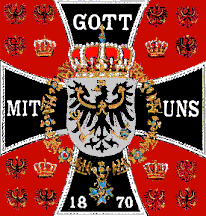| Royal Ancestors from Germany |
|
|
Royal Ancestors from Germany INTRODUCTION For almost 2000 years after its initial appearance in history, the region comprising present-day Germany was occupied by a multiplicity of independent or semi-independent states. The inhabitants of the region possessed all of the prerequisites for political union, including a common racial background and language, mutual customs and institutions, and a community of religion. Indeed, nominal statehood was achieved on several occasions during the Middle Ages, but in each instance the body politic proved to be structurally weak and incapable of withstanding the splintering effect of feudalism. After each period, all of relatively brief duration, centralized authority collapsed and the nation disintegrated into numerous principalities. The political chaos implicit in this process was compounded by frequent partitions or amalgamations of the Germanic states. The ethnological and geographical origins of the Teutonic linguistic stocks are obscure. it is probable that various tribes of the stock had infiltrated central Europe long before the beginning of the Roman era, but not until 113 BC, when the Cimbri and Teutons defeated a Roman army in what is now Austria, did any of the tribes begin to figure in written history. During the next century the Romans clashed with their northern neighbors on numerous occasions, particularly after Gaius Julius Caesar launched his conquest of Gaul in 58 BC. He found several tribes, collectively known as the Germani (from a Celtic word meaning “The Shouters”), in possession of Gaelic territory east of the Vosges Mountains. Within three years, Caesar subjugated part of the invaders and pursued the remainder across the Rhine to their ancestral homeland, called Germania. Roman armies were generally successful in Germania until 9 AD. In that year Arminius, who was a chieftain of the Cherusci, led an uprising against the Romans, and annihilated three Roman legions. The victorious Germanic tribes compelled their erstwhile overlords to withdraw to the west bank of the Rhine. After the short-lived retaliatory campaigns of Germanicus Caesar, Rome adopted a policy of containing its warlike neighbors. The strongly defended frontiers of the Roman Empire insured generally peaceful relations with the Germani during the 1st and 2nd centuries AD. Several important towns, including Cologne, Augsburg, Tier, and Bonn, were established in Germania during this period. Of greater importance, the Germanic tribes, formerly a multitude of semi-nomadic groupings, began to federate and coalesce into nations. Outstanding among these nations were the Almanni, Goths, Suevi, Frisii, Lombards, Vandals, Saxons, Franks, and Burgundians. The Roman emperors, beset by internal and foreign difficulties, accepted some of the Germanic groupings as allies in the 3rd and 4th centuries, and allowed them to settle within the imperial domain. With the decline of Roman power in the 5th century, the Goths, Burgundians, Franks, and other tribal groups, yielding to pressure from the invading Huns, overran vast portions of Roman territory, including Gaul. Before the end of the century, the Franks, under the leadership of Clovis, were masters of Gaul and a large part of the region east of the Rhine. The kingdom of the Franks, became the nucleus of the Frankish empire, which embraced most of present-day France and Germany. The internal strife that developed after the death in 814 of Charlemagne under whom the Frankish kingdom attained imperial proportions, was adjudicated in 843, by the Treaty of Verdun. By the terms of the settlement, the empire was divided among Charlemagne’s three grandsons, with Louis II receiving the east portion, a rough approximation of modern Germany. The west portion, corresponding in general to Lotharingia, Burgundy, and Lombardy. This intermediate kingdom shortly disintegrated into various principalities, which for centuries afterward were the source of rivalry and friction between the east and west Franks. Besides territorial rivalries, linguistic differences served to worsen relations between the two great divisions of the Franks, the west Franks having abandoned their native tongue and assimilated the Latinized speech of Gaul. In the new German realm, as in other kingdoms of Europe, royal authority was largely nominal. The feudal chieftains, particularly those of the duchies of Saxony, Swabia, and Bavaria, retained absolute control of their domains, and the right to elect their sovereign. For the most part, the authority of Louis II was limited to his personal possessions, mainly in the duchy of Franconia. Louis’ chief son Charles, known as “The Fat”, secured control of the other parts of the former Frankish Empire in 884, the expanded kingdom collapsed when, in 887, Charles was deposed. Henry I is generally recognized as the first ruler of stature to appear in Germany, Duke of Saxony, who obtained the throne in 919, with the support of Franconia. Shortly after his accession, Henry extended his authority over the Swabians, and Bavarians, creating for the first time a united Germany. He also secured the vassalage of the Duke of Lotharingia, defeated the Moravians and other Slavic tribes, and repulsed the Magyars, a marauding tribe that had long threatened to engulf east Germany. During the reign of Henry’s son and successor Otto I, a capable ruler and soldier, royal authority in Germany was still further consolidated. A number of feudatory rebellions were suppressed, Bohemia subdued, and including the Danes, was annexed. In many respects Otto created, during the early years of his reign, the foundations for an enduring state. In 951, however, he intervened in the affairs of Lombardy, starting a chain of events that culminated in a general rebellion in Germany. The king finally triumphed, in 955, when his forces decisively defeated the Magyars, then in alliance with the rebel chieftains. This victory ended the Magyar threat to east Germany. ON the other hand, the threat of feudal usurpation of royal authority remained, and Otto seeking to lessen this threat, determined to enlist the prestige and power of the church on the side of the crown. He soon began to divide the duchies under his direct control into smaller units, most of which were awarded to Church dignitaries. Otto also appointed many prelates to important administrative posts. The displays of friendliness to Rome were accompanied, in 961, by an important favor to Pope John XII, who was then at loggerheads with Berengar II of Italy. At the Pope’s request, Otto invaded Italy and deposed Berengar. In 962, in recognition of Otto’s services, John XII awarded him the Imperial crown and title. The coronation, which rivaled, in terms of sovereignty, the imperial structure originally bestowed in 800 on Charlemagne, inaugurated the German-Italian political union known after 1155 as the Holy Roman Empire. Having secured the imperial title and complete control of the Church in Germany, Otto swiftly brought the papacy under his personal domination. The vast secular and spiritual powers of the emperor rested on shaky foundations, however. Through the creation of numerous ecclesiastical and lay principalities, he had given impetus to the divisive forces at work within Germany; the political situation in Italy, particularly in the south portion of the peninsula, verged on anarchy; the Empire lacked an efficient administrative apparatus; and, finally, the Imperial subversions of traditional papal authority contained the seeds of mortal conflict between Church and state.
The Eastern Franks The Carolingian Dynasty
Medieval Civilization
Salic Frankish Empire
Hohenstaufen Dynasty
|

